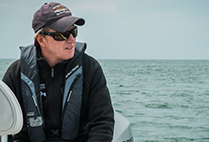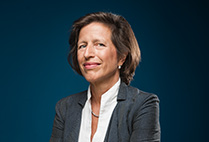IN 1964, THE KU KLUX KLAN was bombing churches and murdering students who went to Mississippi to help register black voters. Eugene Stanley was one of those students. When an explosion rocked the house where he was staying, he and his hosts ducked for cover behind the furniture. The sound turned out to be the sonic boom of a jet overhead, and Stanley left Mississippi unscathed.
Years later, he survived an encounter with Soviet security forces after speaking out at a scientific conference in the Soviet Union in support of refuseniks who’d been barred from attending.
Perhaps because he’s been battle-tested by experiences like these, Stanley—a William Fairfield Warren Distinguished Professor and a College of Arts & Sciences professor of physics—is undaunted in his career-long mission: working to bring more women and minorities into the field of physics.
That battle is far from easy. In 2012, 20 percent of PhDs in physics were awarded to women—an all-time high. “It’s a complex societal issue, but in physics we have had a problem attracting women to the field,” says Andrei Ruckenstein, a CAS professor and chair of physics, citing higher numbers in biology, chemistry, and other sciences. “We want to get more women and underrepresented minorities interested in physics. And to create and sustain that pipeline, you need role models.”
Stanley is underscoring his commitment with a $1 million pledge to CAS over the next 10 years. Half of the money will permanently endow the H. E. Stanley Physics Opportunity Fund, which will support the research of one or more nontenured CAS junior faculty members or graduate students in physics, with preference given to women or underrepresented minorities. The other half will establish the Physics Opportunity Fund, aimed at serving the immediate needs of the department.
“I’m 76, I’m a frugal person, I grew up with tightwads for parents, and now I’m a tightwad myself,” quips Stanley. “And my kids are successful. So I can afford this gift.”
“We’re grateful to Gene for the resources,” says Ruckenstein, “and also for the request that the gift focus on diversity. We want the broadest set of talents and mind-sets involved in physics.”
For decades, Stanley has labored to build a pipeline for women and underrepresented minorities, drawing on his passion, energy, collegiality, and connections. A statistical physicist and expert in unpredictable systems—ranging from the fluctuations of the stock market to the vagaries of sexual relationships—Stanley is also a CAS professor of chemistry, a College of Engineering professor of biomedical engineering, and a School of Medicine professor of physiology. He directs the BU Center for Polymer Studies, an interdisciplinary group seeking to understand the origins of Alzheimer’s disease. Over his four decades at BU—and before that at MIT—Stanley has mentored hundreds of budding scientists.
“He changed my life,”says Sharon Glotzer (CAS’93), now a University of Michigan professor. Glotzer recalls Stanley’s words after an experiment by her lab group ended in a vacuum pump explosion. “He shouted down the stairwell to me, ‘You look like a theorist!’”
Within months of switching to Stanley’s team, she was attending important conferences and meeting Nobel Prize winners. “There was this spinning whirlwind of excitement and science and discovery that followed him everywhere,”she says.
Stanley’s efforts to help make science more inclusive—such as his work behind the scenes with the L’Oréal-UNESCO for Women in Science initiative—earned him the American Physical Society’s Dwight Nicholson Medal for Outreach in 2003.
For his part, Stanley emphasizes that increasing diversity in science will do far more than simply give a boost to women and minorities. It will also help move science forward. After all, as he said in his Nicholson Medal acceptance speech, if half the available talent is excluded from an endeavor, that endeavor can only progress at half speed.













































Related Stories
US Secretary of Energy Moniz to Receive Honorary Degree
Focuses on clean energy, nuclear issues
Boston Mayor to SPH Grads: “We Need Your Energy”
Martin Walsh on importance of community in his recovery
Promise and Potential, Cut Short
Friends, family, teachers mourn BU grad student Lu Lingzi
Post Your Comment